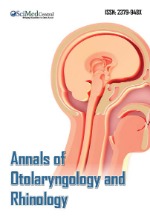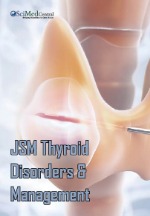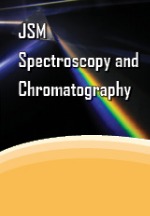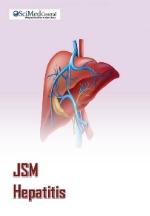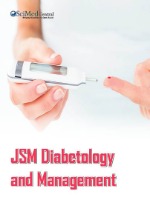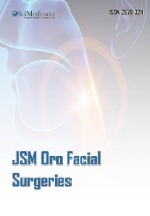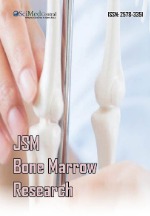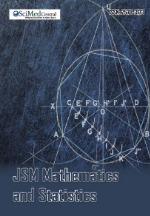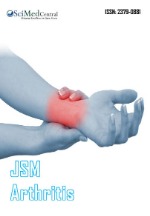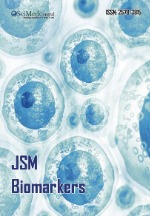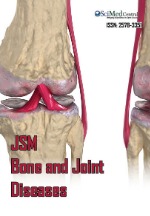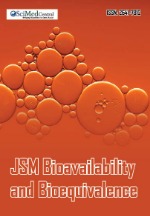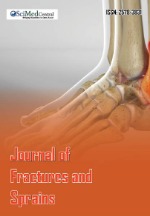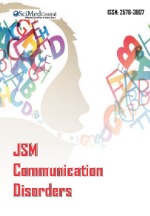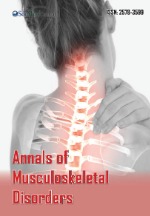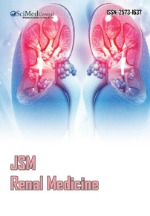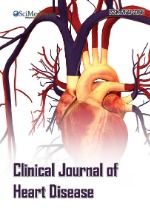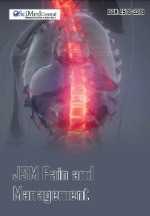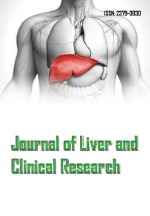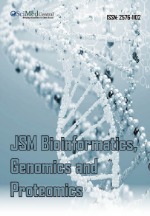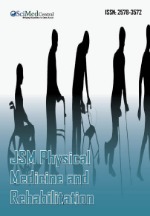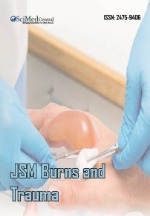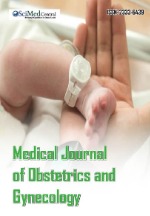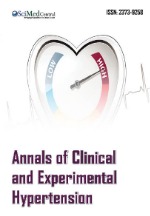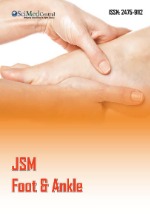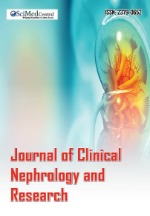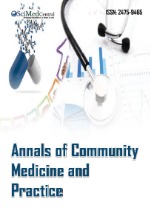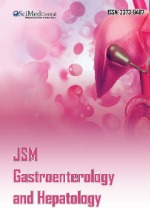Electrocardiography Diagnostic Performance for Left Ventricular Hypertrophy during Arterial Hypertension on African Cardiac Center
- 1. Department of Cardiology, Yalgado Ouédraogo University Hospital, Burkina Faso
- 2. UFR Health Sciences, Joseph Ki Zerbo University, Burkina Faso
- 3. Department of Cardiology, CHU Bogodogo, Burkina Faso
Abstract
Introduction: Left ventricular hypertrophy (LVH) is the earliest and most common complication during hypertension. It is also a powerful predictor of cardiovascular risk. In current practice, electrocardiography (ECG), and Doppler echocardiography are the tools used for the diagnosis of LVH during arterial hypertension.
Objective: Determine the electrical diagnostic performance of LVH during arterial hypertension on African context
Methods: We conducted a descriptive and analytical cross-sectional study that took place from April 1 to July 10, 2017 in the cardiology department of the CHU/YO. Hypertensive patients were systematically included in our study. The performance of seven (07) electrical indices was evaluated by sensitivity, specificity, positive and negative predictive value and area under the curve with reference to Doppler echocardiography.
Results: 213 patients were included in the study. The sex ratio was 0.46 with a mean age of 54 years. Obesity was noted in 31% of cases and renal failure in 30% of cases. The hypertension was controlled in 39% of patients. The prevalence of hypertension on echocardiography was 22%. The electrical sensitivity of the indices ranged from 4.3% to 34.8%. Specificity ranged from 87.4% to 99.4%. PPV ranged from 28.6% to 83.3% and NPV from 78.6% to 83.8%. The MacPhie index had the best diagnostic performance with an AUC of 0.638.
Conclusion: The ECG has a poor performance in the diagnosis of LVH in hypertensive subjects. Research should focus on modeling new clues to improve the diagnostic performance of the ECG
Keywords
• Left ventricular hypertrophy
• Arterial hypertension
• Electrocardiogram
• Doppler echocardiography
Citation
LENGANI EH, KOLOGO JK, YAMEOGO AR, NACANABO WM, NEBIE LV, et al. (2025) Electrocardiography Diagnostic Performance for Left Ventricular Hypertrophy during Arterial Hypertension on African Cardiac Center. J Cardiol Clin Res. 13(1): 1210
INTRODUCTION
Hypertension is the leading risk factor for cardiovascular disease [1]. Its prevalence was estimated at 40% worldwide and 46% in Africa in 2008 [2]. The STEPS survey [2], carried out in Burkina Faso in 2013 showed a prevalence of hypertension of 18%, with 25% in urban areas and 15% in rural areas.
High blood pressure is associated with a number of complications, including left ventricular hypertrophy (LVH), the earliest and most common. It is considered a powerful independent predictor of cardiovascular risk [3 5]. Occasional studies show a higher prevalence in black subjects compared with Caucasians [6]. The prevalence of LVH was 32% in Nigeria in 2013 [7], and 62% in Cameroon in 2014 [8]. In Burkina Faso, Niakara [9], found a prevalence of 53.3% in 2001 in urban areas and Yaméogo [10], a prevalence of 44.4% in rural areas in 2014.
Several methods are used to diagnose LVH in hypertension. These include chest X-ray, ECG, Doppler echocardiography, chest CT scan and MRI. In our context, the ECG is the most widely used diagnostic tool because it is the most affordable. Numerous electrical criteria and scores have been developed for the diagnosis of LVH; However, their diagnostic performance remains highly variable due to the interaction of certain factors such as age, gender, obesity and the presence of a metabolic syndrome [11,12]. Doppler echocardiography is highly sensitive and specific, making it the gold standard for diagnosing LVH [13].
In view of the paucity of studies carried out in Africa on the diagnostic performance of ECG in the diagnosis of LVH during hypertension and the particularity of black subjects, we asked ourselves the following question: are scores and indices effective in the diagnosis of LVH? The aim of this study was therefore to evaluate the diagnostic performance of the various electrical scores and indices, using Doppler echocardiography as the gold standard.
METHODOLOGY
The study took place in the cardiology department of CHU Yalgado OUEDRAOGO from 1 April to 10 July 2017. This was a descriptive and analytical cross-sectional study with a diagnostic aim.
Patients with hypertension were included in the study, regardless of age, sex with or without other cardiovascular risk factors and who had received at least one cardiology consultation. Only patients who agreed to take part in the study were included after informed consent
ECG: patients with rhythm disorders such as atrial flutter, complete arrhythmia due to atrial fibrillation, pre excitation syndrome, and conduction disorders such as BAV II or III were excluded from our study;
On Doppler echocardiography: the presence of a septal bulge, asymmetric septal hypertrophy, a paradoxical septum and very hypoechoic patients were excluded.
The following indices have been used to diagnose electrical LVH [14]:
- Sokolow-Lyon index: R in V5 or V6 + S in V1 > 35 mm;
- Sokolow-Lyon product: (RV5 or RV6 + SV1) × QRS duration > 3000 mm.ms in women and 4000 mm.ms in men
- Cornell index: RaVL+SV3 > 20 mm in women and 24 mm in men;
- Cornell product: (RaVL+SV3+8) × QRS duration > 2440 mm.ms in women and (RaVL+SV3) × QRS duration > 2440 mm.ms in men;
- Gubner index: RDI+SDIII > 25 mm;
- Lewis number: (RDI+SDIII)-(SDI+RDIII)>17 mm;
- MacPhie index: Rmax+Smax> 40 mm.
On Doppler echocardiography, LVH was considered for the following threshold values [15]: left ventricular mass (LVM) indexed to body surface area greater than 110 g/m2 in women and 134 g/m2 in men.
The data were analysed using R software [16], and the pROC package [17], was used for AUC analysis and comparison. Diagnostic performance was defined for each ECG index by calculating sensitivity (Sen), specificity (Spe), positive predictive value (PPV), negative predictive value (NPV) and AUC. AUC was compared using Delong’s test. Tests were statistically significant if p ? 0.05.
RESULTS
General data
We included 213 hypertensive patients over our study period. The sex ratio was 0.46 with a female frequency of 68.5% (n = 146). The mean age of the study population was 54 ±12 years, with extremes of 23 and 79 years. Patients with hypertension for more than five years accounted for 56% (n = 119) of the subjects. The general characteristics of the population are listed in Table 1.
Table 1: General characteristics of patients (n = 213
|
Characteristics |
Values |
|
Sociodemographic caracterises |
|
|
Average age (years) |
54 ± 12 years |
|
Female |
146 (68,5 %) |
|
HTA duration |
|
|
HTA more than 5 years |
119 (56%) |
|
HTA between 1-5 years |
60 (28%) |
|
HTA less than 1 ans |
34 (16%) |
|
Facteurs de risque cardiovasculaire |
|
|
Sedentarity |
163 (76,5 %) |
|
Obesity |
66 (31%) |
|
Dyslipidemia |
57 (26,7%) |
|
Diabetes |
31 (14,6%) |
|
Smoking |
9 (4,2%) |
|
Level of Hypertension |
|
|
Controled |
83 (39%) |
|
HTA grade I |
69 (32,4%) |
|
HTA grade II |
37 (17,3%) |
|
HTA grade III |
24 (11,3%) |
|
Retentissement HTA |
|
|
Kidney chronic faillure |
65 (30,5%) |
|
Hypertension rethinopathy |
47 (22%) |
|
Stroke |
27 (12,6%) |
Electrical and echocardiographic data
On electrocardiogram, the prevalence of left ventricular hypertrophy according to the Lewis index was the highest (n = 31, 15%). A repolarisation disorder was found in 24% (n=51) of cases and subepicardial ischaemia was the most frequent disorder. Echocardiography Left ventricular hypertrophy indexed to body surface area was found in 22% (n=46) of patients. Concentric remodelling was found in 33% (n = 71) of cases. The patients’ electrical and echocardiographic data are listed in Table 2.
Table 2: Electrocardiogram and Doppler Cardiac ultrasound data
|
Parameters |
Values |
|
Electrocardiogram |
|
|
Prevalence of left ventricle hypertrophy depending on the index |
|
|
Lewis index |
31 (15%) |
|
Cornell index |
28 (13%) |
|
MacPhie index |
28 (13%) |
|
Cornell Product |
26 (12%) |
|
Sokolow-Lyon index |
18 (8,5%) |
|
Gubner index |
7 (3,3%) |
|
Sokolow-Lyon product |
6 (3%) |
|
Repolarisation abnomalities (n=51) n (%) |
|
|
Ischemia under epicardial |
31 (61%) |
|
Ischemia under endocardial |
13 (25%) |
|
Endocardial lesion |
7 (14%) |
|
Doppler cardiac ultrasound |
|
|
Prevalence of left ventricle hypertrophy |
46 (22%) |
|
Left ventricle geometry n (%) |
|
|
Normal |
61 (29%) |
|
Concentric remodeling |
71 (33%) |
|
Concentric hypertension |
61 (29%) |
|
Excentric hypertrophy |
20 (9%) |
|
Average of ejection fraction of the left ventricle |
63% ± 7,93% |
|
Diastolic fonction of the left ventricle |
|
|
Normal |
96 (46%) |
|
Abnomalites of relaxation |
107 (51%) |
|
Restrictif profil |
7 (3%) |
Diagnostic performance of the ECG
The MacPhie index had the best intrinsic performance with a sensitivity of 35% and a specificity of 93%. It also had the best extrinsic performance with a positive predictive value of 57% and a negative predictive value of 84%. Table 3
Table 3: Diagnostic performance of electrocardiogram for ventricular hypertrophy
|
Criteries |
Sen |
Spe |
VPP |
VPN |
ASC (Intervalle de confiance à 95%) |
|
MacPhie index |
34,8 |
92,8 |
57,1 |
83,8 |
0,638 (0,54 – 0,74) |
|
Cornell index |
32,6 |
92,2 |
53,6 |
83,2 |
0,624 (0,52 – 0,72) |
|
Cornell product |
28,3 |
92,2 |
50 |
82,3 |
0,602 (0,50 – 0,70) |
|
Sokolow-Lyon index |
21 |
95 |
55 |
81 |
0,585 (0,48 – 0,68) |
|
Sokolow-Lyon product |
10 |
99,4 |
83,3 |
80,1 |
0,551 (0,45 – 0,65) |
|
Lewis index |
21,7 |
87,4 |
32,2 |
80,2 |
0,546 (0,45 – 0,64) |
|
Gubner index |
4,3 |
97 |
28,6 |
78,6 |
0,507 (0,41 – 0,60) |
summarises the diagnostic performance of the various electrical indices and Figure 1
Figure 1:ROC curve of diagnosis performance of MacPhie index, AUC: Area under the curve
shows the AUC of the MacPhie index.
Table 4
Table 4: Electrical performance depending on obesity
|
Indix |
SC (IC à 95%) |
Test of Delong (P-value) |
|
|
Obesity |
unobesity |
|
|
|
Cornell index |
0,682 (0,54 - 0,81) |
0,687 (0,53 - 0,83) |
0,9575 |
|
MacPhie index |
0,724 (0,58 - 0,86) |
0,692 (0,55 - 0,83) |
0,7519 |
|
Sokolow-Lyon index |
0,617 (0,41- 0,81) |
0,739 (0,58 - 0,89) |
0,3468 |
shows the performance of the best electrical indices as a function of obesity. We note a discrepancy between the results, although the statistical tests are not significant. The Cornell Index was practically unaffected by obesity
The binomial association of the Cornell index and secondary repolarization disorder significantly increased electrical diagnostic performance with an area under the curve of 0.805. Figure 2
Figure 2:ASC of the association of the Cornelle index and the secondary repolarization disorder, ASC: area under the curve
shows the AUC plot for the combination of Cornell Index and secondary repolarisation disorder.
DISCUSSION
The diagnostic prevalence of left ventricular hypertrophy by electrocardiogram, all indices combined, varied between 3 and 15% in our study. This low prevalence was reported by Verdecchia [18], who also found a prevalence between 3.9 and 17.8%. This variability in the electrical prevalence of LV hypertrophy may be due to the existence of a wide variety of ECG indices and criteria for diagnosing LVH.
Electrical sensitivity for all criteria combined ranged from 4.3% to 34.8% in our study. Our data are much lower than those in the literature, which show a higher sensitivity of the electrical tool in the diagnosis of LVH. Indeed, Ogulandé [19], in Nigeria found a sensitivity varying between 13.8 and 58.6% but reported that the Gubner index had the lowest performance. The specificity found in our study varied between 87.4 and 99.4%. This high specificity of electrocardiography for the diagnosis of left ventricular hypertrophy had been described by Niakara [20], in 2001 who found a specificity between 72 and 89% and Gaspérin [21], in Brazil who reported a specificity between 76 and 93.6%. Overall, our study agrees with the literature that the ECG has poor sensitivity and high specificity in the diagnosis of LVH [22].
The PPV found in our study varied from 28.6 to 83.3%. The Sokolow-Lyon index had the best PPV. Gaspérin [21], also reported that the Sokolow-Lyon index had the best positive predictive value at 57.58%. The NPV in our study ranged from 78.6% to 83.8%. Our results are similar to those of Dada [23], and Ogulandé [19], in Nigeria, who found very high NPVs ranging from 81 to 90.29% and 67.9 to 76.3% respectively.
The AUC of the conventional indices in our study ranged from 0.507 to 0.638. The MacPhie index had the best diagnostic performance in the study population, followed by the Cornell index and the Cornell product. All indices had a poor ability to diagnose LVH. The best indices were influenced by obesity, apart from the Cornell index, although statistical tests were not significant. Okin [24], also showed in his study that the Cornell index and the Cornell product were the indices least influenced by patient morphology. Niakara [20], and de Tsiachris [13], had also shown that the Cornell index and the Cornell product had the best electrical performance in the diagnosis of LVH in hypertensive patients, regardless of their build. In our study, the combination of the Cornell index and secondary repolarisation disorder had better diagnostic performance than conventional indices. Indeed, Ehara [25], found that the presence of secondary repolarisation disorder alone had a higher sensitivity and specificity than the Sokolow-Lyon index in the diagnosis of LVH in hypertensive subjects. However, the number of patients with a secondary repolarisation disorder was low in our study, so it is not possible to confirm the performance of this association.
CONCLUSION
The ECG is the most widely used diagnostic tool for assessing the cardiac impact of hypertension. However, it is accredited with poor performance in the diagnosis of LVH in hypertension. The electrical criteria currently used routinely have good specificity, but very low sensitivity. Combining conventional indices with a parameter such as the presence of a secondary repolarisation disorder greatly improves the diagnostic performance of the ECG for LVH. Research using larger studies should be encouraged in order to find more effective and practical electrical criteria.
RÉFÉRENCES
- Bryan W, Guiseppe M, Wilko S, Enrico AR, Michel A, Michel B, et al. ESC/ESH Guidelines for the Management of arterial hypertension. Eur Heart J. 2018; 39: 3021-3104.
- Soubeiga JK, Millogo T, Bicaba BW, Doulougou B, Kouanda S. Prevalence and factors associated with hypertension in Burkina Faso: a countrywide cross-sectional study. BMC Public Health. 2017 ; 17: 64.
- Cuspidi C, Esposito A, Negri F, Sala C, Masaidi M, Giudici V, et al. Studies on Left Ventricular Hypertrophy Regression in Arterial Hypertension : Un message clair pour le clinicien ? Am J Hypertens. 2008 ; 21: 458-463.
- Kamath S, Markham D, Drazner MH. Increased prevalence of concentric left ventricular hypertrophy in African-Americans : Une épidémie d’insuffisance cardiaque s’ensuivra-t-elle ? Heart Fail Rev. 2006 ; 11: 271-277.
- Cuspidi C, Facchetti R, Bombelli M, Sala C, Tadic M, Grassi G, et al. Does QRS Voltage Correction by Body Mass Index Improve the Accuracy of Electrocardiography in Detecting Left Ventricular Hypertrophy and Predicting Cardiovascular Events in a General Population ? J Clin Hypertens. 2016; 18: 415-421.
- Abassade P, Lamour P, Iung B, Delbechi G, Guiomard A. Left ventricular hypertrophy in patients with hypertension. Une étude comparative entre les Africains noirs et les Européens blancs. Ann Cardiol Angeiol. 1996; 45: 567-572.
- Nkado RN, Onwubere BJC, Ikeh VO, Anisiuba BC. Correlation of Electrocardiogram with Echocardiographic left ventricular mass in adult Nigerians with systemic hypertension. West Afr J Med. 2003; 22: 246-249.
- Jingi AM, Noubiap JJN, Kamdem P, Kingue S. Déterminants et amélioration du diagnostic électrocardiographique de l’hypertrophie ventriculaire gauche dans une population d’Afrique noire. PLOS ONE. 2014 ; 9: e96783.
- Niakara A, Ouédraogo N, Nébié LVA, Samadoulougou AK, Kaboré NJP, Ouandaogo BJ. L’hypertrophie ventriculaire gauche du Noir Africain hypertendu : étude échocardiographique chez 452 sujets. Ann Cardiol Angeiol. 2001; 50: 197-201.
- Yaméogo C. Hypertension artérielle, Hypertrophie ventriculaire gauche et risque. Mémoire DES cardio. Université de Ouagadougou. 2015; 95.
- Cuspidi C, Rescaldani M, Sala C, Guido G. Left-ventricular hypertrophy and obesity: a systematic review and meta-analysis of echocardiographic studies. J Hypertens. 2014; 32: 16-25.
- HouénassiD, Tchabi Y, Awanou B, Véhounkpé-Sacca J, Akindès- Dossou YR, Sehonou F, et al. Évolution du risque cardiovasculaire des patients traités pour HTA à l’hôpital d’instruction des armées de Cotonou. Ann CardiolAngeiol. 2013; 62: 12-16.
- Tsiachris D, Chrysohoou C, Oikonomou E, Lazaros G, Dimitriadis K, Maragiannis D, et al. Distinct role of electrocardiographic criteria in echocardiographic diagnosis of left ventricular hypertrophy according to age, in the general population: the Ikaria S. J Hypertens. 2011; 29: 1624-1632.
- Lu N, Zhu JX, Yang PX, Tan XR. Models for improved diagnosis of left ventricular hypertrophy based on conventional electrocardiographic criteria. BMC Cardiovasc Disord. 2017 ; 17: 217.
- Cohen A, Guéret P, Abergel E, Brochet E, Derumeaux G, Roudaut R. Manuel d’échocardiographie Clinique.ed LAVOISIER : 543-557. Paris. 2012.
- Robin X, Turck N, Hainard A, Tiberti N, Lisacek F, Sanchez J, et al. pROC: an open-source package for R and S+ to analyze and compare ROC curves. BMC Bioinformatics. 2011; 12: 77
- R Development Core Team. R: un langage et un environnement pour le calcul statistique. R Foundation for Statistical Computing, Vienne, Autriche. 2005.
- Verdecchia P, Carini G, Circo A, Dovellini E, Giovannini E, Lombardo M, et al. Left ventricular mass and cardiovascular morbidity in essential hypertension : the MAVI study. J Am Coll Cardiol. 2001; 38: 1829-1835.
- Ogunlade O, Akintomide AO. Évaluation des critères de tension pour l’hypertrophie ventriculaire gauche chez les hypertendus adultes dans le sud-ouest du Nigeria. J Cardiovasc Dis Res. 2013; 4: 44-46.
- Niakara A, Ouédraogo N, Nébié LVA, Kaboré NPJ, Megnigbeto CA. Indices électrocardiographiques de routine pour le diagnostic de l’hypertrophie ventriculaire gauche : performances chez le sujet noir africain. Ann CardiolAngeiol. 2002; 51: 193-198.
- Gasperin CA, Germiniani H, Facin CR, Moares de Souza A, Pereira Da Cunha CL. Une analyse des critères électrocardiographiques pour déterminer l’hypertrophie ventriculaire gauche. Arq Bras Cardiol. 2002; 78: 59-82.
- Martin TC, Bhaskar YG, Umesh KV. Sensibilité et spécificité de l’électrocardiogramme pour prédire la présence d’une augmentation de l’indice de masse ventriculaire gauche sur l’échocardiogramme chez les patients hypertendus afro-caribéens. West Indian Med J. 2007; 56: 134-138.
- Dada A, Adebiyi AA, Aje A, Oladapo OO, Falase AO. Comparaison des critères d’Araoye avec les critères électrocardiographiques standard pour le diagnostic de l’hypertrophie ventriculaire gauche chez les hypertendus nigérians. West Afr J Med. 2006; 25: 179-185.
- Okin PM, Roman MJ, Devereux RB, Kligfield P. ECG identification of left ventricular hypertrophy. Relationship of test performance to body habitus. J Electrocardiol. 1996; 29: 256-261.
- Ehara S, Hasegawa T, Matsumoto K, Otsuka K, Yamazaki T, Iguchi T, et al. The strain pattern, and not Sokolow-Lyon electrocardiographic voltage criteria, is independently associated with anatomic left ventricular hypertrophy. Heart Vessels. 2014; 29: 638-644.




